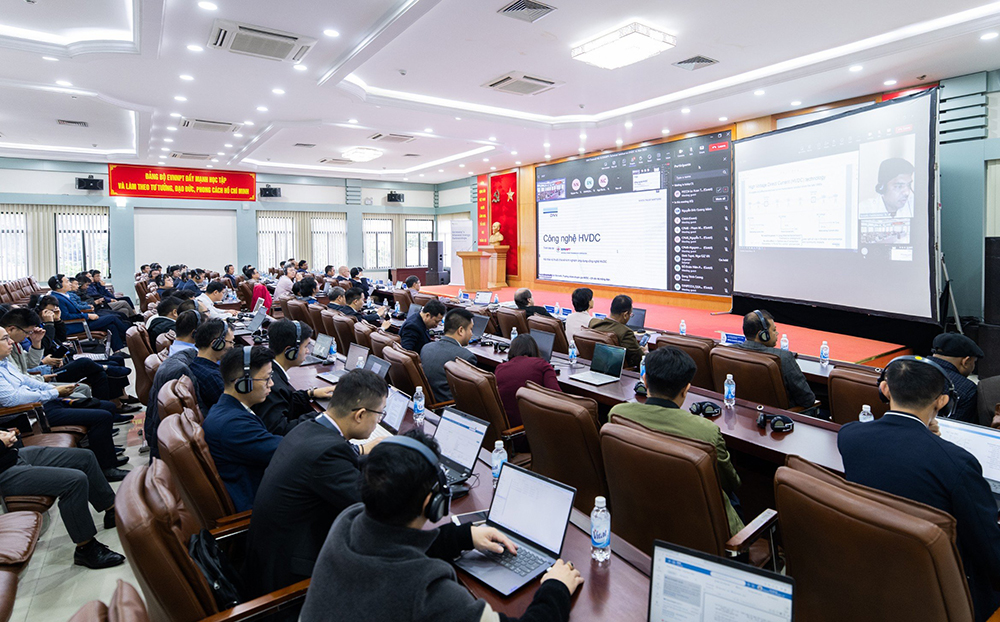GIZ shares experience in applying direct current power transmission technology - HVDC
15:33, 17/11/2023
On November 16, in Hanoi, the National Power Transmission Corporation (EVNNPT) coordinated with the German Development Cooperation Organization in Vietnam (GIZ Vietnam) and organized a technical workshop to share experiences in applying high voltage direct current power transmission technology (HVDC).
Speaking at the conference, Deputy General Director of EVNNPT - Mr. Luu Viet Tien said that the National Electricity Development Plan for the period of 2021 - 2030, vision 2050 was approved by the Prime Minister in May 2023, with the orientation of building 5,200 - 8,300km of power lines and 40,000 - 60,000MW of ultra-high voltage DC transformer station capacity in the period of 2031 - 2050. In the context of developing 70,000 - 91,500MW of offshore wind power sources by 2050, the application of HVDC is necessary to increase long-distance transmission capacity, reduce power loss, increase power system stability, and reduce land area to be used for power grid corridors. Therefore, HVDC technology is proven to be an advanced solution chosen by many countries to solve the above problem.

A large number of delegates attending the conference
Mr. Markus Bissel, Director of the Vietnam - Germany Energy Partnership Program, GIZ Vietnam, said that Vietnam has made significant strides in renewable energy in the past few years. With a net zero emissions target by 2050, Vietnam is determined to switch to clean energy and reduce carbon emissions. However, integrating renewable energy sources such as solar and wind power into the national grid poses many challenges. One of the most significant challenges is the transmission limit of the national power grid. HVDC is considered the most advanced technology today, offering many advantages compared to traditional HVAC technology. According to practical experience, investing in HVDC technology will help solve many problems, including not only helping to increase transmission limits to help relieve inter-regional capacity, increasing the proportion of power exchange between neighboring countries, supporting the integration of a high rate of renewable energy sources, but also supporting the safe and efficient operation of the power system, helping to reduce short circuit current, reducing power loss.
At the workshop, experts shared benefits and solutions for converting existing alternating current (AC) overhead power transmission lines into direct current (DC) lines; HVDC technologies and applications; 10 years of practical experience in operating a back-to-back HVDC interconnection system between Bangladesh and India to import electricity.
evn.com.vn
Share